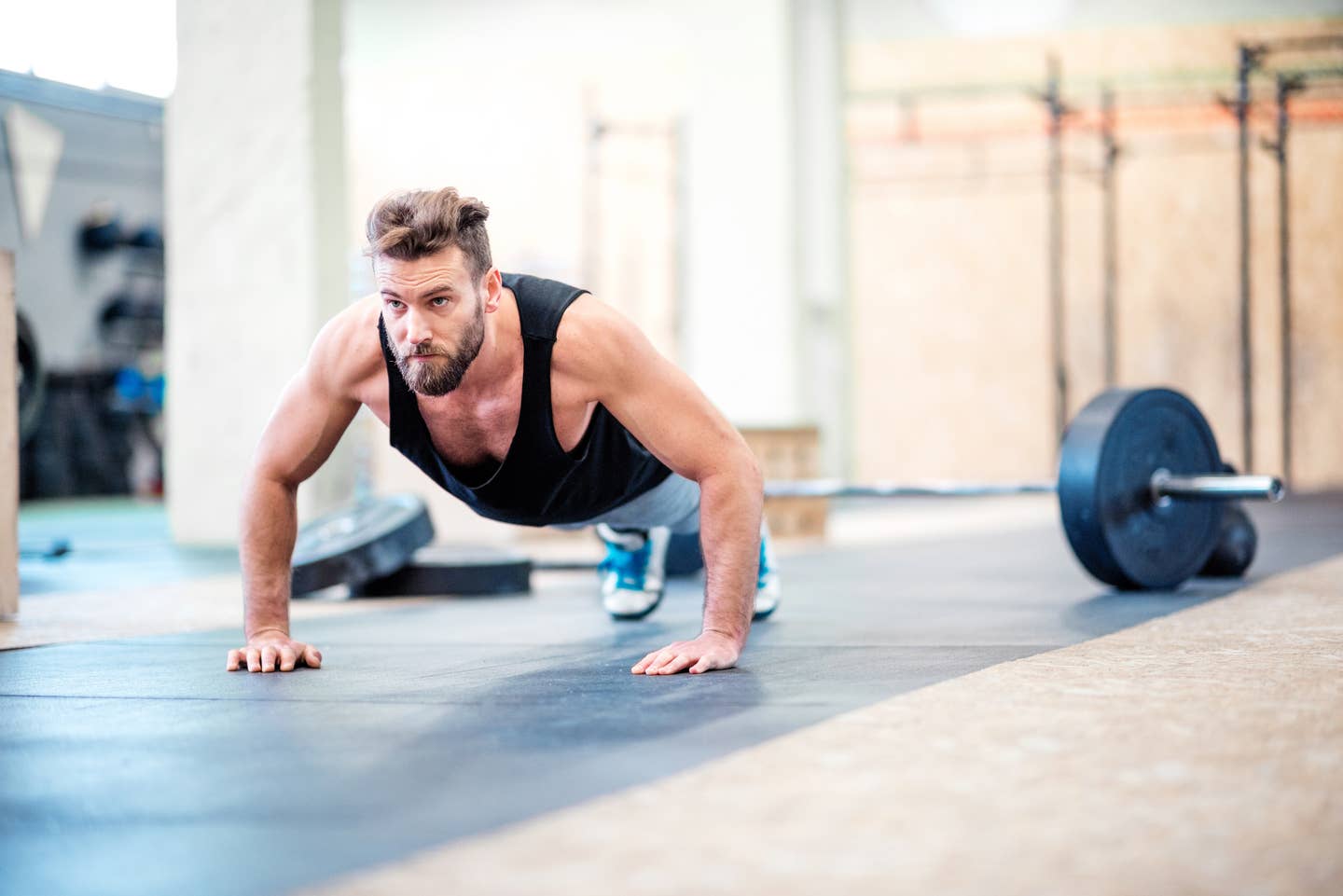
Different Workout “Cocktails” Achieve the Same Health and Fitness Benefits
Cocktails and exercise generally don't mix. But a new study from Columbia University working with researchers around the globe has come up with a new concept: The workout cocktail. It's not actually booze (sorry), but it acts as a relatable metaphor for anyone who wants to "mix" their workouts with hard, medium, and easy activities to get fitter and be healthier, without working out longer or harder.
Here's how it works: You can now combine different workout ingredients (walking and boot camp or HIIT and running, or gardening and strength training) to achieve the same amount of health benefits as if you worked out hard, straight up, for 30 minutes to an hour and didn't add in those "softer" activities throughout the day. Or to put it another way: If all you do is crush it at the gym and sit all day, you are not going to see the results that you would if you also added in some light activity during the other hours.
Getting all the benefits of this type of mix and max training does involve being active outside the gym, engaging in light activity throughout the day, since your 30 minutes in the gym is such a small sliver of your overall waking hours, the study found. So, to get the best results from the intense training you're doing, add in walking, playing golf (pulling clubs as opposed to riding in a cart), gardening, swimming, or hiking--anything but sitting for long stretches, to get that perfect "cocktail" mix of easy, medium and hard exertion that will help you reach your optimal health and fitness goals.
"For decades, we've been telling people that the way to stay healthy is to get at least 30 minutes of exercise five days a week," says Keith Diaz, Ph.D., assistant professor of behavioral medicine and director of the exercise testing lab at the Center for Behavioral Cardiovascular Health at Columbia University's Vagelos College of Physicians and Surgeons.
"But even if you're one of the few adults who can stick to this advice, 30 minutes represents just 2 percent of your entire day," Diaz points out. "Is it really possible that our activity habits for just 2 percent of the day is all that matters when it comes to health?" (Answer: No.)
The amount of cardio or strength exercise you get at the gym is actually only one piece of the fitness picture, Diaz says, as reported by Science Daily, since you can more than make up for that 30 minutes depending on how you spend the rest of the day.
Here's how a fitness cocktail works, to get results from the gym
You work your a-- off at the gym during Bootcamp, then go sit all day at your keyboard and wonder why you aren't getting fitter. Instead of looking at just those 30 minutes of exercise and the effects of your HIIT training, the researchers decided to look at the combinations of how different individuals' activities throughout the day "add up" to better fitness, health, and longevity. So even if you only clock a shorter (13 minutes) high-intensity workout, you can still achieve weight loss, fitness, and longevity by adding in other light or moderate fitness elements throughout the day. The researchers looked at each activity and whether it had harmful or beneficial effects on fitness levels and long-term health. The goal was to find "the best combination, or cocktail, of ingredients needed to prolong life," explained Diaz.
The benefits of 30 minutes of moderate-to-vigorous exercise depend on how you spend the rest of the day, the authors found. It's not enough to add those minutes if you sit the rest of your waking hours. Instead, you're better of spending less time crushing it and more time moving it.
"Getting 30 minutes of physical activity per day, or 150 minutes per week, is what's currently recommended, but you still have the potential to undo all that good work if you sit too long," says Sebastien Chastin, PhD, professor of health behavior dynamics at Glasgow Caledonian University in Scotland and lead author of the study.
With data from more than130,000 adults measured during six studies in the UK, US, and Sweden, the researchers looked at various combinations of activities and how they affected mortality rates and using fitness trackers they could measure how many minutes people spent on each of the following:
- Moderate-to-vigorous exercise, defined as brisk walking, running, or anything that increases heart rate),
- Light physical activity, such as housework or casual walking that doesn't elevate heart rate
- Sedentary behavior such as sitting at your desk or watching TV
The results were that your 30 minutes of moderate to vigorous exercise needs to be mixed with other light activities to get the best long-term effects.
Getting 30 minutes per day of moderate-to-vigorous physical activity reduced the odds of an earlier death by up to 80% for anyone who sat for less than 7 hours a day, it did not reduce mortality risk for individuals who sat for over 11 to 12 hours per day, the researchers found.
"In other words, it is not as simple as checking off that 'exercise' box on your to-do list," says Diaz. "A healthy movement profile requires more than 30 minutes of daily exercise. Moving around and not remaining sedentary all day also matters."
Light physical activity is more important than you think, the study found
The research found that people who spent just a few minutes engaging in moderate-to-vigorous physical activity lowered their risk of early death by 30 percent, as long as they also spent six hours or more doing light physical activity during the rest of the day.
"Perhaps you're a parent with young kids and you simply can't get to the gym to exercise," Diaz says. "But you can still have a healthy movement profile as long as you move around a lot throughout the day as you tend to your everyday activities."
Sitting isn't as bad for your health as smoking, but it's still bad, Diaz says. "While there will always be sitting in our lives, as with most things in life, it's about sitting in moderation. The key is to find the right balance of sedentary time and physical activity."
So what works best? A fitness cocktail formula of 3 to 1
For your best results follow this ratio: For every one hour of sitting, do three minutes of moderate-to-vigorous activity or 12 minutes of light activity. This was shown to be the optimal "cocktail" for improving health and reducing the risk of early death.
"Our new formula gets at the right balance between moderate-to-vigorous exercise and sitting to help people lead a longer, healthier life," says Chastin. "The leftover hours should be spent moving around as much as possible and getting a good night's sleep."
Here are the best combinations of activities to achieve health and longevity and reduce risk of early death by 30 percent. One rule of thumb to follow: Every time you lower the amount of vigorous exercise you get in a day, raise the amount of light activity you do.
- 55 minutes of exercise, 4 hours of light physical activity, and 11 hours of sitting
- 13 minutes of exercise, 5.5 hours of light physical activity, and 10.3 hours of sitting
- 3 minutes of exercise, 6 hours of light physical activity, and 9.7 hours of sitting
The researchers also found that just two minutes of moderate-to-vigorous exercise is equivalent to four to 12 minutes of light physical activity. And both are worthwhile for fitness and longevity.
"This is good news for people who may not have the time, ability, or desire to engage in formal exercise," Diaz says. "They can get health benefits from a lot of light physical activity and just a little moderate-to-vigorous activity."
Bottom line: There is no one-size-fits-all approach to physical activity, according to Diaz. Instead, mix it up, but don't think just because you got in 30 minutes at the gym it's okay to sit all day. "It may be more important to mix a movement cocktail that includes a healthy dose of exercise and light activity to take the place of sitting," according to Diaz.
More From The Beet






